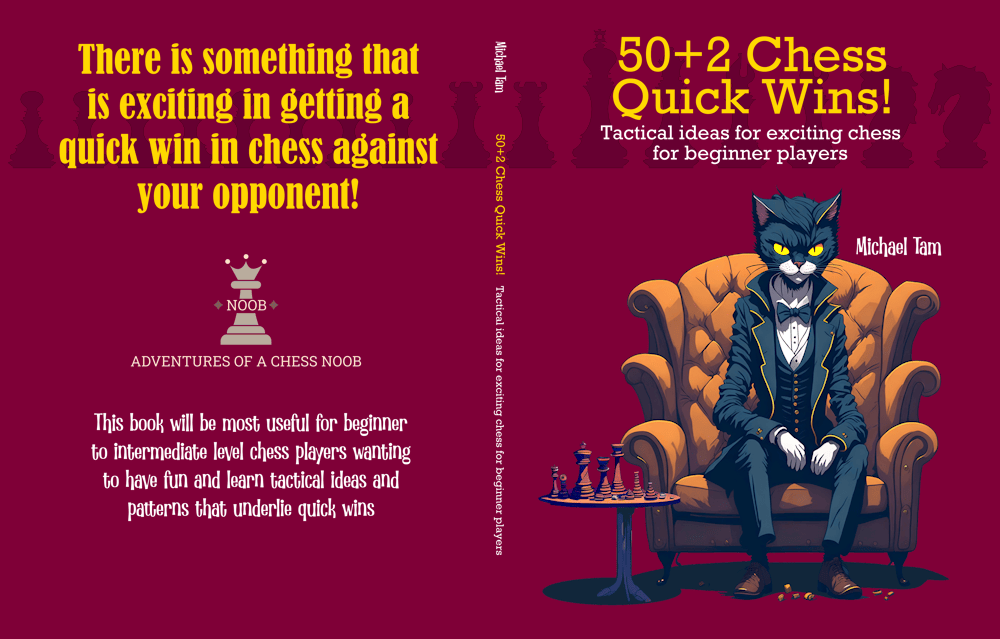
Four Knights Italian | WIN WITH BLACK!
#fourknights #italian #openingtactics
Very recently I played against the Four Knights Scotch. Today's game is against the Four Knights Italian!
The thing to know about the Four Knights Italian (1. e4 e5 2. Nf3 Nc6 3. Nc3 Nf6 4. Bc4) is that it can be very good for Black at the beginner-intermediate level, but you do need to know a few moves in the opening. The curious thing is that the opening seemingly obeys opening principles for White - take the centre with pawns, develop your minor pieces, knights before bishops. Although the Four Knights Italian is completely fine for White, it is just a touch slow, and slow enough that White will often be taken off guard with the following opening attack by Black!
And that is, (4... Nxe4!). What is interesting is that this is the best move evaluation-wise for Black - it's not an inaccurate move at all. However, this aggressive move is only played by Black in about 1 in 10 games according to the Lichess community database! This does mean that White will often not be expecting it, and even if they've seen it before, not likely to have much experience against it at the beginner-intermediate level.
White captures the knight (5. Nxe4) but Black now has the powerful (5... d5) forking White's knight and bishop in the centre of the board! Evaluation-wise, White is still completely fine - Stockfish calls it just about equal - but it is a tricky position for White to navigate. In the Lichess database, the win ratio is Black (59%) vs White (37%) - crushing on move 5!
The only good move for White is Bd3, but this is neither obvious, and nor is it commonly played. Usually, White will misplay this position and Black gets a major advantage right out of the opening. In this game, White plays (6. Bb5??), which is a blunder, though I didn't quite take full advantage of it in the game. The move makes sense for White, with the bishop pinning Black's c6-knight to the king, and it looks like after (6... dxe4 7. Nxe5) that White regains material equality and has a double attack on Black's knight.
However, this seeming advantage is illusory. White's advanced pieces are without any pawn support and are thus off-side. Black's queen has the powerful Qg5 - a fork of the g2-pawn (which gives Blackburne-Shilling Gambit trap line vibes!) and of White's e5-knight which is skewered to the b5-bishop!
I didn't see this in the game but found a non-quite as powerful alternate queen move (7... Qd5), putting the queen in the centre and with a fork of White's knight and bishop on the fifth rank. Stockfish called this a mistake, but the evaluation is still [-1.2]. However, I do flub the exchange by not appreciating which piece (knight or bishop) I should capture first and Stockfish reckons that at the end, the position is basically equal again [-0.1]. However, I would argue that though that might be the case, it's a lot easier to play for Black than White!
Consider a couple of turns later, move 11, we both castle kingside and enter the middlegame. Black has the bishop pair and the queen ready to attack White's kingside. White's pieces do not have immediate access for an attack.
And from the middlegame, I completely capture the initiative and White is forced into the defensive, eventually being overwhelmed. I put my queen and bishop into a battery - threatening checkmate on h2. White is forced to play (14. g3) to block the mate, but this wins a major concession as they've weakened the light square in front of their king. I'm able to immediately exploit this with my light square bishop (14... Bh3). White is forced to move their rook - losing tempo. I rotate bishop (16... Bf3), which now comes with an attack on White's queen - again, White needs to respond to my initiative.
And on move 17 (17... Bf3), the bishop rotation around White's king's defensive pawns is done and White would have been able to see the mating attack. Technically, Stockfish thinks that White could defend this and pull the game into a (losing) endgame, but they needed to find (18. Qc3), threatening a checkmate threat of their own and then trading away the attack. This is not easy to find. The second best move for White was to sacrifice their queen for Black’s e4-pawn - very difficult to contemplate!
Instead, White played (18. Re3??) to trade their rook for my bishop. Although this makes sense from a “one-move” perspective, it doesn't work as at the end of the trade sequence (19. Rxf3 exf3), the bishop has been replaced with a pawn, which is still attacking the g2-square. Checkmate with Qg2 is unavoidable and White resigned. GG!
The big takeaway from this game is to learn how to play the opening of the Four Knights Italian with the Black pieces! The critical move is Nxe4 on move 4 and it's a very winning move!



